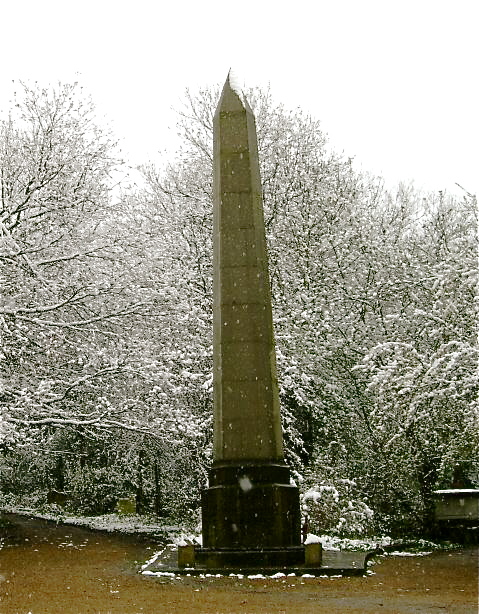
Most locals will know something of the Monument to the Political Martyrs of 1794 in Old Calton Burying Ground.
Designed by the architect Thomas Hamilton (who was also responsible for the Burns Monument and Old Royal High School on Regent Road; the Orphans School, now Dean Gallery, on Belford Road; and the Royal College of Physicians on Queen Street), the impressive 90ft obelisk was erected in 1844 following a public subscription instigated by Joseph Hume MP (sometime resident at 38 York Place).
It commemorates the 1793–94 show trials of five radicals who had convened in Edinburgh to discuss parliamentary reform.
They were: Thomas Muir, a Scottish lawyer; Thomas Fyshe Palmer, an English curate; William Skirving, a farmer’s son from Livingstone; Joseph Gerrald a former colonialist resettled in London; and Maurice Margarot of the London Corresponding Society.
All five were found guilty of sedition and were sentenced by the less-than-well-disposed Lord Braxfield to 14 years' transportation to Australia.
Muir escaped from Down Under in 1796 and died in Paris three years later. Skirving and Gerrald died soon after arrival in Botany Bay. Palmer served out his sentence and died on his way home in 1802. Margarot – an irrepressible troublemaker throughout his time in Australia – eventually returned to Britain in 1810 and died a pauper five years later.
No mention is made in the monument’s inscription of another key figure, George Mealmaker: a shadowy Dundonian weaver who testified at the trial that he and not Palmer had been responsible for writing a key document. His evidence was discounted, but further pamphleteering afterwards led to his conviction and transportation four years later. He died in Australia in 1808.
The obelisk rises iike a defiant one-fingered salute to the Melville Monument in St Andrew Square, atop which stands the horrible Henry Dundas, Secretary of State for the Home Department at the time of the trial, now glowering down over the capital he long controlled with a mixture of repression, patronage and questionable accounting.
All of this is probably fairly familiar to locals. What may come as a surprise, as it surprised us, is that a second monument – a kind of non-identical third-of-the-size twin to the Edinburgh one – was erected seven years later, again at Joseph Hulme’s instigation, in south-east London’s Nunhead Cemetery (see Google map below).

We are indebted to former Edinburgh resident Roz Hardie who this morning sent us a link to the Transpontine website (from which the photo immediately above is taken). Follow the links for interesting biographical sketches.
A fascinating audio guide to Calton Hill's political topography is available as part of Collective Gallery's Observers Walks series. Written by Ruth Ewan and Astrid Johnston, Memorialmania is accessible here.
-----------------------------------
@theSpurtle Good piece. Also a bit of Craigleith came to Trafalgar Square for Nelson's monument http://news.bbc.co.uk/1/hi/england/london/5165948.stm …
